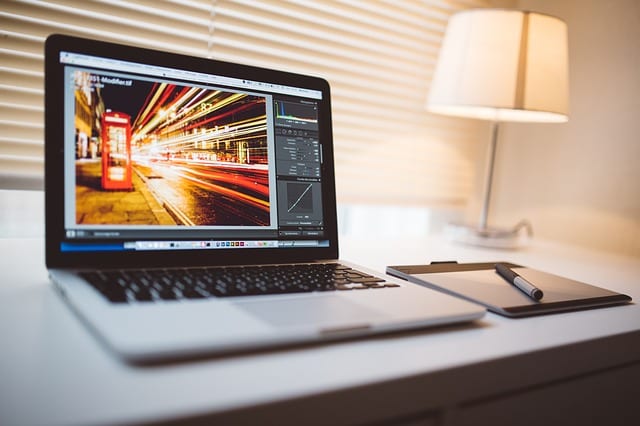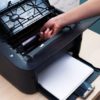Imagine you’re in a meeting, on the road, or in a café finishing up crucial work when all of a sudden, your laptop is low on battery. You check your bags for the power adapter—nada. You search around for an outlet—nothing. Your battery life is dwindling and you have to think fast. What do you do?
Your first goal is to find ways to increase your battery life. That way you won’t lose any of the work you’ve been doing. Sounds like a tall order, isn’t it? Well, not to worry, we’ll share some quick ways to work around this dilemma.
Disable Seldom Used Ports and Devices
Clearly, every component in your laptop needs power to function. In most cases, though, the easiest way to stretch your battery life is to turn off the components that aren’t being used. To start with, disconnect peripherals like a USB mouse. Then target power hogs like Bluetooth radios, Ethernet adapters, and even unused optical drives. However, before you proceed to shut down any of these, make sure they’re not in use and they aren’t essential to any continuing operation on your laptop (e.g. hard drives). Now, to disable unused devices on a Windows OS, just go to the system’s Control Panel, find the Device Manager program, and then proceed to look for the device within its relevant category. Once you find it, right-click on the device’s name and select “Disable” from the drop-down menu.
While you can also disable unused components (e.g. USB ports) using the terminal program on a Mac, we don’t recommend you doing it as this will only make your system act up. Often, an IT professional will perform such an operation to lock down the equipment for security reasons so it isn’t as simple as it looks. Instead, try disabling the Wi-Fi and Bluetooth (if you no longer need them) from the Menu bar at the top of the screen.
Adjust the Laptop’s Settings
No doubt, a lot of stuff running in the background of your laptop may be eating up the battery fast. Among those that we often overlook are the display, the keyboard, and the built-in speakers. By adjusting the settings for each, you can extend your battery life when you really need it.
First, turn off the keyboard’s backlight when you’re not typing in the dark or you’re a confident touch-typist. Next, reduce the device’s screen brightness. In most cases, you won’t need to run the screen at 100% brightness. Often, 50% may be enough to get the job done. Plus, this has the added benefit of prolonging your battery life as well as reducing the risk of eye strain. Afterward, dial down the screen resolution from the detailed 1080p (or higher displays) to a basic 1366×768. This significantly reduces the power used in the graphics processor. This adjustment is most practical in cases when you’re simply working on word processors. It’s not as practical when you’re dealing with tasks like video or photo editing. Lastly, turn off the laptop’s speakers. This may be less of a power drain compared to the previous two, but it still will buy your battery more time if you mute them. However, if you’re the type who needs a bit of music to function optimally, you can always tone down the volume or plug in a pair of earphones.
Close Programs and Turn Off Processes
If you’re somebody who loves to multi-task, chances are that such a habit may be draining your battery faster than usual. Working on multiple applications and processes simultaneously makes your processor work harder and use more power. In this case, turn off any programs that you aren’t using at that moment.
If you are using Windows, take a look at the System Tray (lower right section of the desktop) and determine which among the hidden icons aren’t in use. Afterward, open the Task Manager by pressing Ctrl+Alt+Delete simultaneously. Look for those unused programs that may have been left running because you accidentally minimized the applications instead of closing them. Next, click on the Processes tab where you’ll be shown all the processes currently running in the background. Once you’re there, disable any processes associated with music/video players, cloud storage apps (e.g. Dropbox), or any programs that you’re not using.
With MacBooks, take a look at System Preferences > Users & Groups and search for a menu called ‘Login Items’. Once you’re there, try deleting any power-hungry programs you’re no longer using. Next, hold down the Option key and click on the battery indicator in the Menu to see programs that are consuming huge amounts of power. Alternatively, you can open the Activity Monitor to see which processes and programs are using the most battery. When you find the culprits, stop them by selecting the program and clicking on the Stop icon.
Switch to Battery Saver Mode/Eco Mode
Windows and OS makers have provided a nifty feature just for you: eco-mode for Mac, and battery-saver mode for Windows. Activating these low-power modes will automatically adjust your laptop settings and enable changes that can stretch your battery life a little longer. This will help you save your battery life until you can finally hit that ‘Send’ or ‘Save’ button. Nevertheless, it’ll be useful to keep the other tricks in mind just in case you need to squeeze out more time from your laptop.
It’s normal to panic when you’ve got deadlines to chase and you see the low battery notification on your laptop. However, before you’re totally overwhelmed with fear… remember that you’ve got an ace up your sleeve. Just remember these helpful tricks and you can better handle a similar situation in the future. It helps to keep your device fully charged before you head off, too.


